

(1870-1912)
Mr Alfred "Big Neck" Nichols of Oak Tree Rd, Clouds Hill, London, was the Boatswain or Bo'sun on board the RMS Titanic. He had been at sea for 24 years with the White Star Line. His previous assignment before he was transfered to the RMS Titanic was the RMS Olympic.
After the collision Mr Nichols led a team of 6 seamen to open some of the lower gangway doors to load lifboats, since he and the seamen were never seen again, it is presumed they were trapped below and went down with the ship.

Mr Albert M. Haines, 30, was a native of Kent but resident in Southampton in 1912. Mr Haines was the Boatswain's mate on board the RMS Titanic. He was transfered from the RMS Olympic.
After the collision Haines and Lamp Trimmer: Samuel Hemming heard air escaping from the Forepeak Tank. They reported it to Cheif Officer: Henry Wilde who was busy making an inspection.
Hemming told Wilde that water was filling the Forepeak Tank but that the storeroom was still dry. Wilde left to report back to Captain Smith on the bridge.
Haines throughout the sinking helped fill lifeboats and was put in charge of Lifeboat 9.
Boatswain's Mate: Mr Albert M. Haines, AB, MN, surivived the sinking.

Mr Archibald Jewell (23) was a native of Cornwall but in 1912 lived at College St, Southampton. He served aboard the RMS Oceanic before joining the RMS Titanic. Lookout: Mr Archibald Jewell, AB, MN, was saved in Lifeboat 7.

Mr Alfred Frank Evans (24) was a native of Hampshire and lived at Deal St, Southampton.
Mr Evans was an ex-Royal Navy AbleBodied Seaman of 5 years. He joined the White Star Line and was paid £66 per annum. He recieved an extra 5 shillings a week for his Lookout duties as did all Lookouts. Prior to joining the RMS Titanic, he served on the RMS Oceanic.

(1881-1912)
Mr John Maxwell, a native of Liverpool was living at Leighton Rd, Southampton in 1912.
His served on the RMS Majestic before joining the RMS Titanic. Maxwell was a qualified Ship's Carpenter and had been at sea for 6 years.
At approximately 9:00pm on the 14th April, Second Officer Lightoller sent for Carpenter Maxwell. He informed Maxwell of the cold temperatures and asked him to keep an eye on the fresh water supplies in the tanktop.
When the Titanic hit the iceberg, Carpenter Maxwell was asked to sound the ship for damage by Captain Smith. He accompanied Captain Smith, Chief Officer Wilde, Fourth Officer Boxhall, Sixth Officer Moody and Mr Thomas Andrews Jr as they did a tour of the ship inspecting the damage. He assisted in the Engine Room and helped with the pumps however Maxwell died in the sinking. His body was never recovered. He was unmarried.

(1876-1917)
Mr Ernest Edward Archer of 59 Portchester Road, Woolston, Southampton, was an Able Bodied Seaman in the Merchant Navy. He worked for the White Star Line and was transferred from the RMS Olympic to the RMS Titanic.
He was born in Whitenap, Romsey in 1876 the son of Richard Archer and Ann (nee Townsend). He married Miss Elizabeth Mary Spencer in C.1896 and they had 2 sons and 4 daughters.
Mr Archer was rescued in boat 16.
He died on 17 October 1917 of Consumption, aged 41, and is buried at St Mary's Extra Cemetery, Sholing, Southampton.
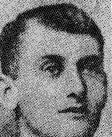
Mr Edward John Buley, 27, from Southampton had been serving in the Royal Navy. His last ship was the HMS Dreadnought, but so that he might "better help his mother" he bought his discharge from the Navy and joined the White Star Line as an Able Bodied Seaman.
Buley was put in command of lifeboat 10 and transfered to 14 during the night.
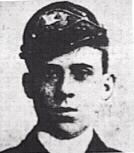
(1886-1912)
Mr William Henry Lyons was an Able Bodied Seaman in the British Merchant Navy. He was stationed on the RMS Majestic before being transferred to the RMS Titanic.
On the night of the sinking, he helped load lifeboats on the port side. He went under along with Second Officer Lightoller and managed to swim to lifeboat 4 and was pulled aboard, however he soon lost conciousness.
He was transfered to the Carpathia where he died around midnight on the 16th April, 1912. He was buried at sea at 4 am later that morning.
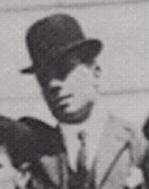
(1880-1943)
Mr George Alfred Moore, of 51 Graham Road, Southampton, was born in 1880, one of four children. He married Miss Eliza Curzin C.1903 and they had three sons and one daughter.
Moore was ordered into Lifeboat 3 to pass ladies in, by First Officer William Murdoch. He then took charge of the lifeboat at the tiller when it was lowered at about 1.00am.
Mr Moore was called up for military service in 1914, prior to war breaking out. He served on armed merchant ships, one of them being the HMS Teutonic.
He was subsequently the gunner on a merchant vessel and in that occupation he travelled the world.
He was discharged from service in 1918 at the end of World War One. Following this he worked on the RUSMS (Royal and United States Mail Ship) Olympic, a liner which was repatriating the Canadian forces.
By 1920 he was serving as a crew member for The P&O Company. On passage back from India he was found to have contracted small pox, so at Aden he was put ashore. Conditions for him there were very basic, he was in the open except for a thatched roof over his head, a boy would bring his food and a priest would call out to him to see if he was well. Despite this he recovered, in all probability these experiences shortened his life.
After returning home he finished his working life on the Southampton docks on the shore Bo'suns gang, working for the cross channel boats.
He died in 1943 aged 63 at the Fenwick Hospital, due to a combination of cardiac & liver problems. George had little time for personal interests, he had to work hard and travel far for very little money, despite his hard life he was an easy going, amicable man who made few demands on anyone.

(1886-?)
Mr John Thomas "Jack" Poingdestre was born at 27 Old St John Road, St Helier, on the island of Jersey on 6 April 1886, the son of a carpenter, Philippe George Poingdestre and his wife Eliza Jane Warr. He was one of twelve children and left Jersey at an early age in order to go to sea.
He was settled at 4 Elm Road, Shirley, Southampton with his wife Miss Florence Maud Gallagher and five children of his own by the time he signed up for the RMS Titanic's maiden voyage.
Poingdestre's life has not been without drama - only a month before the sailing he had been serving aboard the RMS Oceana when it sank off Newhaven on 16 March 1912. This experience may have helped to steady his hand when he was put in charge of lifeboat 12. Beforehand he had gone below to collect his rubber boots and was forced to wade back through waist high water as a bulkhead fractured.
After the sinking, as the boat was nowhere near to capacity, he collected other survivors and had almost 70 people aboard when picked up by the RMS Carpathia.
Poingdestre returned to his family in Southampton after 2½ weeks but went back to sea on the outbreak of WWI - where a third ship sank under him after being torpedoed!
He always refused to talk about the disaster and was not close to his children, who at one stage were placed in a home as their mother could not manage them. Consequently his date and place of death have not yet been ascertained
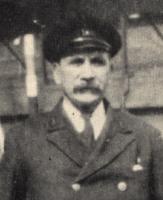
Mr Samuel Ernest Hemming, 40, of 31 Kingslay Road, Southampton was Lamp Trimmer on the RMS Titanic.
At 7.15 pm on the night of April 14th 1912 Hemming arrived on the bridge of the Titanic to report to First Officer William Murdoch that the ship's navigation light had all been lit. As he left Murdoch called him back and asked if he would closed the Fore Scuttle Hatch. Murdoch had noticed that light was coming from the hatch and was concerned that it might interfere with the lookouts ability to spot ice.
After the collision Hemming and Boatswain's Mate Albert Haines heard air escaping from the forepeak tank. They reported it to Cheif officer Henry Wilde who was busy making an inspection. Hemming told Wilde that water was filling the Forepeak Tank but that the storeroom was still dry. Wilde left to report back to Captain Smith on the bridge. After the ship sank Hemming was picked from the water by the occupants of Lifeboat 4.
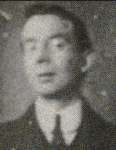
Mr William Carney, 31, of 11 Caird St, West Derby Rd, Liverpool died in the sinking, his body was later recovered (#251).
NO. 251 - MALE - ESTIMATED AGE, 50 - HAIR, FAIR
CLOTHING - Brown suit; steward's jacket and buttons; blue pants below.
EFFECTS - Nail clipper; keys; comb; letters; gold ring.
NAME - William Carney 11 Caird St, West Derby Rd, Liverpool.
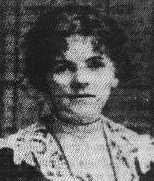
Miss Mary Sloan was born in Belfast. She joined the RMS Titanic on the 10th April, 1912, in Southampton.
After the collision Mary saw Dr O'Loughlin and he confided to her that 'Child, things are very bad'. She also met Mr Thomas Andrews Jr, who advised her 'It is very serious, but keep the bad news quiet, for fear of panic.'
Mary Sloan was standing by one of the boats which was being filled (probably Lifeboat 16. Thomas Andrews recognized her and asked why she was still there. She replied, "All my friends are staying behind. It would be mean to go." Andrews said, "It would be mean for you not to go. You must get in." Miss Sloan finally assented and was aboard the boat when it left the ship.

(1878-1912)
Mr T. W. McCawley of Camden Place, Southampton was described by a survivor as
'a ruddy cheeked, spry little man in white flannels'.
He kept to his post while the passengers waited on deck and eventully found their way into his gym. He told one survior that he would not wear a lifebelt, because it would slow him down as he swam.
He died in the sinking. His body was never recovered.

Mr Frederick Wright, lived at Stern St, Shepherd's Bush, London.
Wright met with Colonel Archibald Gracie shortly after the collision, Gracie jokingly cancelled his raquet lesson for the next morning. Wright seemed concerned, probably because by that time he knew the raquet court to be filling with water.
Wright died in the sinking.
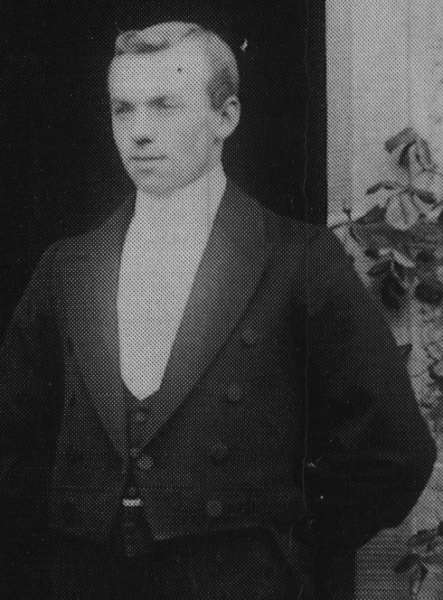
(1883-1912)
Mr James Arthur Paintin, of Shakespeare Avenue, Southampton, was the son of Mr William Paintin, of 52 Marlborough Road, Oxford.
As a boy Mr Paintin sang in the choir at All Saints Church, Oxford. For some years he was in the service of Mr Justice North. Around 1907 he left his home city to join the White Star line.
Paintin travelled considerably in his years with the White Star Line. He had visited India, but during the past four years had chiefly been on the North Atlantic run.
As Tiger (steward) to Captain Edward John Smith, RD, TM, RNR, MN, he served on both the RMS Adriatic and the RMS Olympic before joining the RMS Titanic.
Mr Paintin was married to Alice in November 1911. His wife, who has been visiting Oxford at the time of the disaster, journeyed hurriedly to Southampton in the hope of gaining news from the White Star offices, but only later would she discover that her husband was dead.
|
Return to Gallery: |